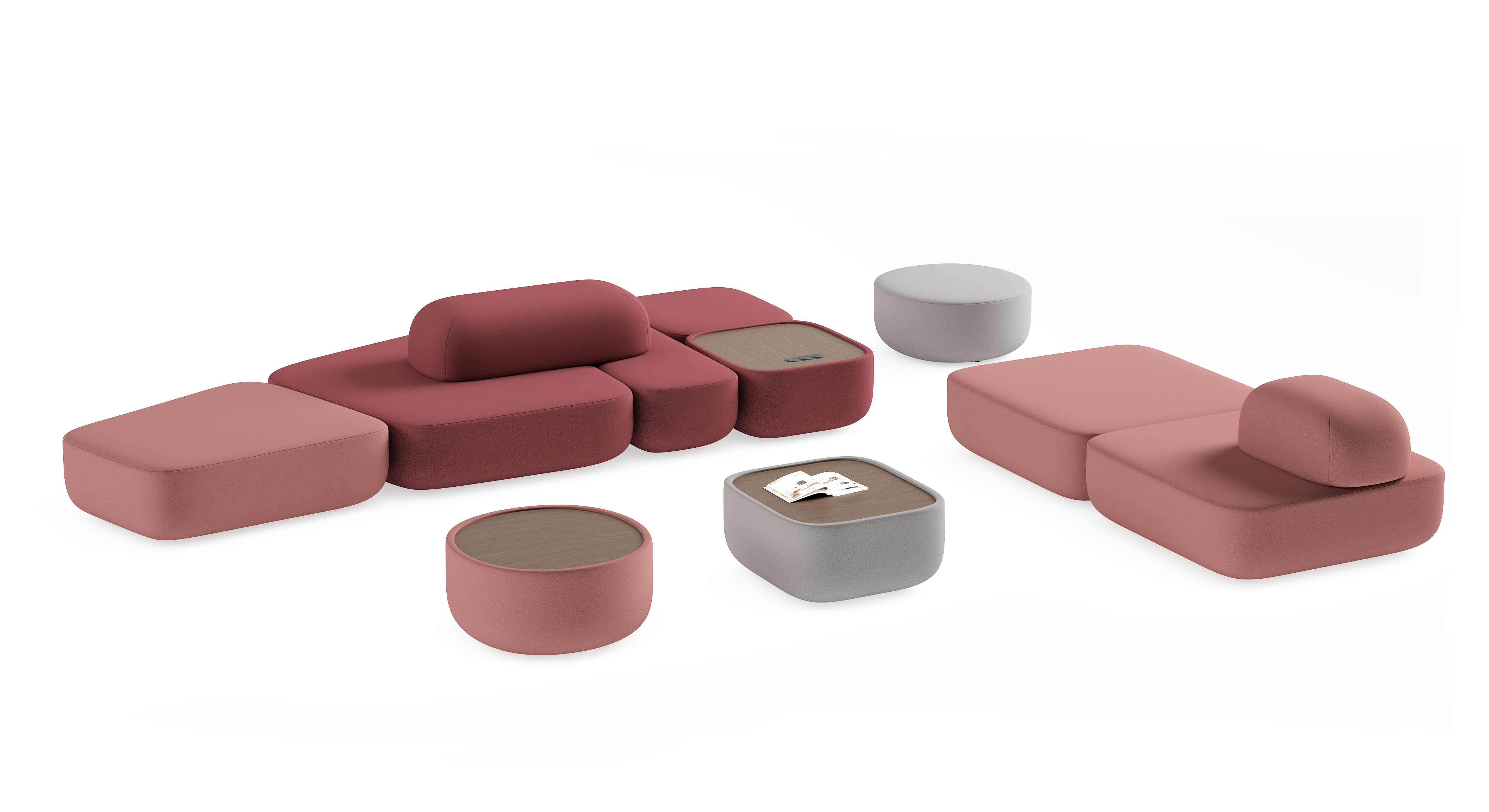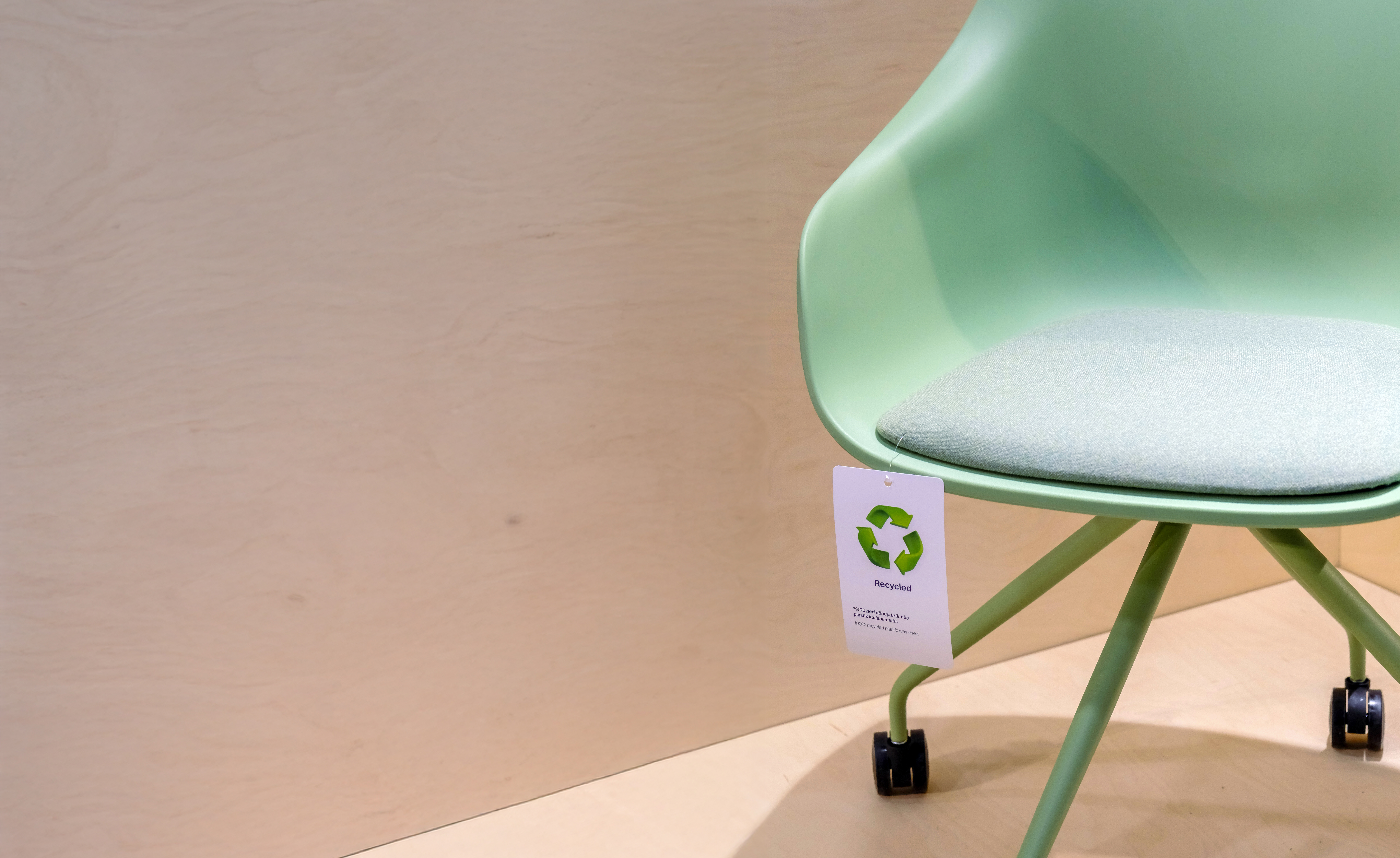Flexibility, Sustainability, and Functionality: The Contribution of Modular Furniture to Design
Flexibility, Sustainability, and Functionality:
The Contribution of Modular Furniture to Design
Today, office design requires a multifaceted approach that goes beyond spatial organization to include flexibility, sustainability, and user experience. As working styles diversify, offices are abandoning fixed layouts and transforming into more flexible and reconfigurable spaces. At the center of this transformation lies modular office furniture.
In this article, we examined how modular furniture systems enable more efficient use of office spaces, supported by application examples and design strategies.
Flexibility and Adaptability
It is almost impossible for modern offices to serve a single purpose anymore. Spaces that perform multiple functions throughout the day and are used interchangeably by different teams are becoming increasingly common. This makes flexibility and transformability in design essential. Modular office furniture stands out as one of the most effective tools to meet this need. The ability to adapt to individual needs as well as to reshape according to group dynamics multiplies the functionality of these furniture systems.
- Thanks to foldable table systems , a meeting area can quickly be converted into a space suitable for individual work.
- Portable partition panels allow flexible provision of privacy in open offices as needed.
- Height-adjustable workstations offer ergonomic solutions tailored to individual needs and adapt to different user profiles.
Such systems enable the reconfiguration of office spaces according to changing needs without restricting spatial organization.
Space Efficiency and Cost Optimization
Designing office spaces to maximize the use of every square meter has become a fundamental requirement, especially in small and shared environments. Large, fixed furniture is being replaced by more compact and multifunctional systems. Modular furniture not only optimizes physical space but also reduces long-term costs by minimizing the need for furniture renewal or expansion. These systems contribute to sustainability goals while accelerating return on investment. In this context, certain modular solutions stand out, especially for compact spaces:
- Multifunctional seating units (e.g., seats that serve both seating and storage purposes),
- Nesting tables and chairs that can be stacked together,
- Wall-integrated or foldable furniture that allows maximum utilization of tight spaces.
At the same time, reconfiguring existing components instead of constantly buying new furniture for new functions reduces costs and enhances sustainability.
Modular Applications: Solutions that Achieve Success
Modular furniture is not just a type of product but also a way of thinking. In successful projects, this approach enhances both the physical and operational flexibility of spaces. Modularity not only provides flexibility in office spaces but also offers versatile usage possibilities. This approach allows architects and interior designers to develop creative and functional strategies in their projects. Let’s look at some modular furniture applications commonly used in today’s offices:
- Portable partition panels: Create flexible boundaries in open offices, offering privacy when needed and openness when desired.
- Detachable storage systems: Can be removed, relocated, or repurposed as necessary.
- Tables that transform from horizontal to vertical: Allow the same space to serve different functions (work, presentation, relaxation).
- Mobile work units on wheels: Enable quick reconfiguration, offering dynamic space organization, especially for project-based teams.
- Plug-and-play modules: Solutions integrated with electricity, lighting, and data systems provide mobility independent of infrastructure.
These applications not only enable more efficient use of physical space but also empower employees by giving them the freedom to make decisions and take ownership of their workspace.
A Sustainability Perspective
Modular furniture represents not only a functional and aesthetic approach but also a design philosophy sensitive to the environment. Sustainability is no longer a "plus" in today’s office projects but a fundamental expectation. Recyclable materials, ease of disassembly, and long-lasting use minimize the environmental impact of modular furniture. Moreover, considering the increasingly diverse working models and temporary office structures, these systems offer solutions that are both environmentally friendly and in tune with the spirit of the age.
- Material waste is reduced during production.
- Worn-out parts can easily be replaced, renewing only necessary components instead of entire products.
- Designs are optimized for disassembly, making recycling processes more feasible.
Additionally, we are in a period where work styles are changing rapidly, and offices are transforming from static, uniform structures into flexible spaces used alternately by different teams. Considering these temporary and multi-purpose usage scenarios, portable and reconfigurable furniture reduces resource consumption and helps users lower their carbon footprint.
In Conclusion...
At Zivella, we develop modular furniture solutions that ensure not only the physical but also the strategic efficiency of office spaces. Our collections enhance functionality while preserving visual integrity, adapting to various working styles, and thereby bringing flexibility, dynamism, and environmental responsibility to office designs. With modular systems that meet all needs—from ergonomics to sustainability, from collaboration to individual productivity—we are shaping the working culture of the future.
Latest Articles
Flexibility, Sustainability, and Functionality: The Contribution of Modular Furniture to Design
Sustainability and Flexibility Take Center Stage in 2025 Office Design
2025 Office Design Trends
-
Shaping the Future with Sustainable Materials
-
The Future of Office Design: A Performance-Based Approach
-
2024 Office Furniture Trends: Innovative and Dynamic Workspaces
-
How to Design an Efficient Office
-
Office Furniture Use in the Tourism Sector
-
Furniture in Co-working Spaces is Simple, Colorful and Modern
-
New Generation Offices for Gen Y and Z
-
Office Furniture Use in the Education Sector
-
We Will Be Back to Office Despite Everything
-
Resimercial Design in Modern Workplaces
-
Ergonomics = Comfort + Ease + Efficiency
-
A Few Tips for Home Offices
-
Offices Meeting the Expectations of Generations Y and Z
-
Shape of Tomorrow


